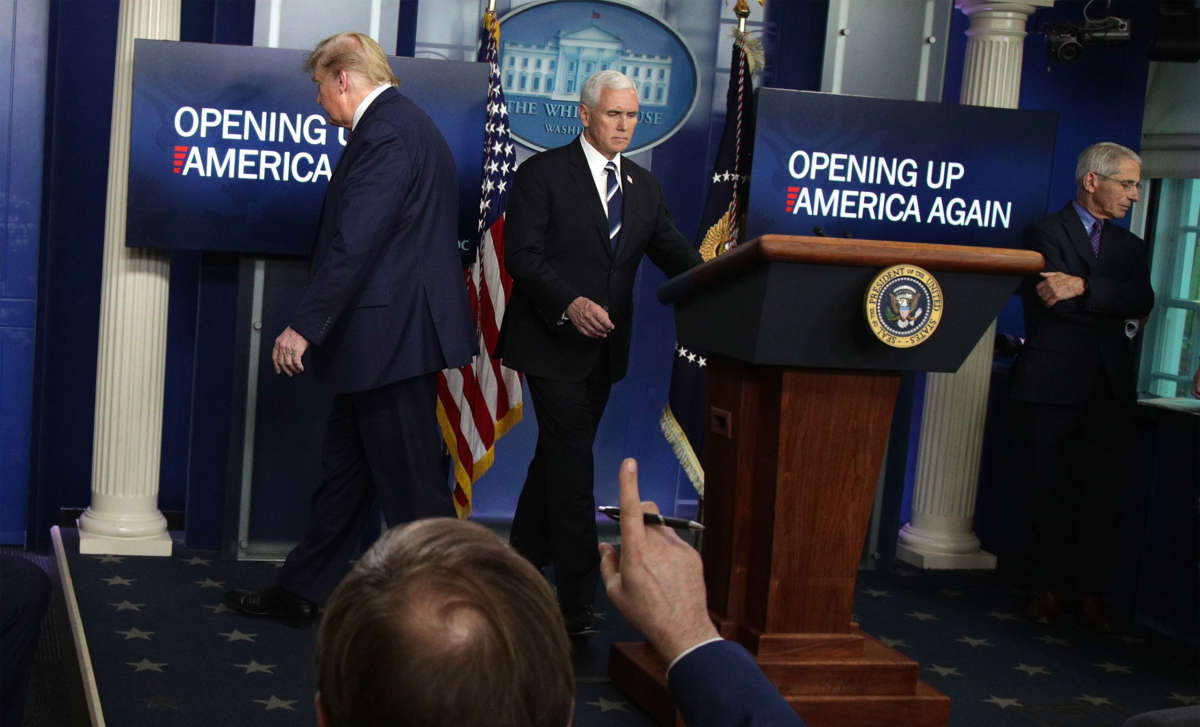A 17-page document from the Centers for Disease Control and Prevention (CDC) providing specific guidance to states and local governments on how to safely transition away from stay-at-home policies has been shelved, officials at the agency said, and is likely to never be seen by those it was intended to help.
It’s been the standard in the past for the CDC to give such guidance during health crises. However, the Trump administration has attempted to control the messaging on its response to COVID-19 in a stricter fashion, including going so far as to restraining members of the coronavirus task force from appearing before a committee within the House of Representatives.
According to reporting from The Associated Press, the CDC document, titled “Guidance for Implementing the Opening Up America Again Framework,” was scheduled to be released to the public last Friday, and gives detailed standards on how businesses, churches, schools and more could safely transition away from stay-at-home orders while at the same time reducing the possibility of spreading the coronavirus.
Among its many detailed recommendations, the document included advice for schools, such as keeping students’ desks six feet apart, curtailing school-wide assemblies, having lunch in classrooms and ending field trips. Restaurants were also encouraged, according to the report, to use single-use cutlery and condiments, and to set up sneeze guards at cash registers.
Although the CDC regularly receives calls from states and localities asking for guidance, the document, which could answer such questions in a more precise fashion, will likely “never see the light of day,” according to one CDC official who spoke with the AP. Rather than allow for the document’s release, it appears that the White House wants states to determine for themselves what standards should be used, without guidance from the CDC’s planned document to help them make the best science-based decisions.
A number of health experts have voiced criticism over the administration’s push for states to begin the process of easing stay-at-home orders across the nation, arguing that doing so risks spreading the disease even further (as of Thursday at 11 a.m. Eastern Time, more than 1.2 million individuals in the U.S. have been diagnosed with coronavirus, with close to 75,000 having died from it since the start of March).
Anthony Fauci, a prominent member of the White House coronavirus task force and director of the National Institute of Allergy and Infectious Diseases, has expressed his own concerns.
“There’s no doubt in my mind that when you pull back mitigation, you’re going to start seeing cases crop up here and there. If you’re not able to handle them, you’re going to see another peak, a spike, and then you almost have to turn the clock back to go back to mitigation,” Fauci has said.
Yet in spite of those worries from experts, President Donald Trump has suggested the net benefit from “reopening” states’ economies will outweigh the negatives that could come about.
“I’m not saying anything is perfect, and yes, will some people be affected, yes, will some people be affected badly — yes, but we have to get our country open and we have to get it open soon,” Trump said to reporters on Tuesday about ending social distancing measures.
As states begin to ease stay-at-home orders, models aiming to predict the national death toll have shifted dramatically upward. The University of Washington’s Institute for Health Metrics and Evaluation (IHME), for example, increased its projection this week, predicting 134,475 deaths due to COVID-19 by August, partially due to states winding back their social distancing rules.
The projection from IHME is a 60,000-count increase from what it had predicted in its previous report.
Join us in defending the truth before it’s too late
The future of independent journalism is uncertain, and the consequences of losing it are too grave to ignore. To ensure Truthout remains safe, strong, and free, we need to raise $24,000 by the end of today. Every dollar raised goes directly toward the costs of producing news you can trust.
Please give what you can — because by supporting us with a tax-deductible donation, you’re not just preserving a source of news, you’re helping to safeguard what’s left of our democracy.
